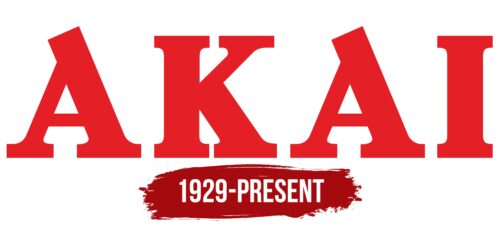Akai: Brand overview
Founded in 1929 as a modest workshop specializing in radio repair, Akai was the brainchild of Masukichi Akai and his brother Saburo, who lived in Tokyo. After World War II, the duo officially founded Akai Electric Company Ltd. in 1946, expanding their business to include the manufacture of radios and a variety of audio equipment.
In the 1950s, Akai began to expand beyond Japan and export its products worldwide. The company quickly gained a reputation for producing high-quality audio recording devices. In the 1960s, the company was at the forefront of innovation, creating cartridge and reel-to-reel tape recorders.
In the 1970s, Akai entered the field of video technology and shocked the market with its revolutionary and cost-effective videocassette recorders. Another turning point occurred in 1980 when the company introduced the world’s first digital audio sampler, which had a significant impact on genres such as hip-hop and electronic music.
Despite these advances, the 1990s were not favorable to Akai. Increased competition led Akai Electric to find itself in financial difficulty by 2000 and eventually declared bankruptcy. Two years later, in 2002, Grande Holdings Ltd. took ownership of the Akai name, repositioning it to market consumer electronics produced by various component manufacturers.
Akai’s product line now includes gadgets such as LED/LCD TVs, home theaters, speakers, and other consumer electronics that are now manufactured in China. Although no longer a Japanese-born innovator, Akai continues to be a valuable electronic choice in today’s marketplace, thanks to Grande Holdings.
Meaning and History
1929 – today
Akai, an electrical engineering company, chose a logo with a universal style, as nothing in it hints that the company is Japanese. The main focus of the emblem is its serious style, emphasizing reliability, confidence, and hope for high technological progress. The symbol itself is textual: there are no images, only the name. The inscription is made in uppercase font – hard, Latin, bold. Each letter is complemented by large rectangular serifs. At the joints, the serifs are rounded, so the transition from one level to another is not sharp and not angular.
The logo seems strong but, at the same time, smooth. The rounded corners give it a friendly look as if it’s not trying to make too strong an impression. This combination of seriousness and accessibility sets the logo apart from other logos and makes people feel like they can trust this brand.
Akai color codes
| Lust | Hex color: | #e41f26 |
|---|---|---|
| RGB: | 228 31 38 | |
| CMYK: | 0 86 83 11 | |
| Pantone: | PMS Bright Red C |





